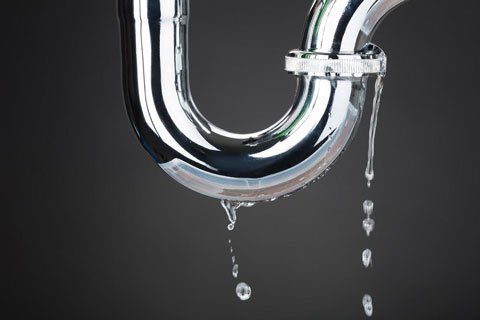We've encountered this article on Hacks to detect leaks listed below on the web and figured it made perfect sense to talk about it with you on this site.

Early detection of dripping water lines can alleviate a potential disaster. Apart from saving you money, it will certainly lessen the stress and also aggravation. The minute you locate a leakage, calling your plumber for repairs is the very best service. Nonetheless, some tiny water leaks might not show up. Below are some hacks that help if you can not find it with your naked eyes.
1. Check Out the Water Meter
Every residence has a water meter. Examining it is a surefire way that helps you discover leakages. For starters, shut off all the water resources. Ensure no one will flush, make use of the faucet, shower, run the cleaning maker or dishwasher. From there, most likely to the meter and watch if it will certainly change. Since no person is utilizing it, there ought to be no movements. That suggests a fast-moving leak if it moves. If you discover no adjustments, wait an hour or two and check back once again. This suggests you might have a slow-moving leak that could also be underground.
2. Check Water Intake
Examine your water expenses and also track your water usage. As the one paying it, you should discover if there are any disparities. If you spot sudden changes, despite your usage being the same, it indicates that you have leaks in your plumbing system. Remember, your water costs ought to drop under the exact same range monthly. An abrupt spike in your costs shows a fast-moving leakage.
Meanwhile, a steady increase every month, despite having the very same behaviors, shows you have a slow-moving leak that's likewise slowly intensifying. Call a plumber to extensively inspect your residential property, particularly if you really feel a warm area on your flooring with piping underneath.
3. Do a Food Coloring Examination
30% comes from commodes when it comes to water intake. Examination to see if they are running correctly. Decline specks of food shade in the storage tank as well as wait 10 mins. There's a leakage in between the tank and dish if the shade in some way infiltrates your bowl throughout that time without flushing.
4. Asses Exterior Lines
Don't forget to check your outside water lines also. Needs to water seep out of the connection, you have a loose rubber gasket. One little leakage can throw away lots of water as well as surge your water expense.
5. Analyze the scenario and also check
Home owners must make it a routine to inspect under the sink counters and also inside cupboards for any bad odor or mold and mildew growth. These two warnings suggest a leak so timely attention is needed. Doing regular assessments, even bi-annually, can conserve you from a major issue.
Examine for discolorations and deteriorating as the majority of pipelines and also devices have a life expectations. If you presume leaking water lines in your plumbing system, don't wait for it to rise.
Early detection of leaking water lines can minimize a potential disaster. Some little water leaks might not be visible. Examining it is a guaranteed way that helps you uncover leakages. One little leakage can lose bunches of water as well as increase your water costs.
If you think leaking water lines in your plumbing system, do not wait for it to escalate.
How to Know If Your Home Has a Hidden Leak
Water Meter Reveals Inexplicable Water Usage
If you’d like to test whether or not there’s a leak somewhere in your home, you can do this using your water meter. Here is how to conduct the test:
Don’t use any water in your home for at least 30 minutes; this also means not turning on faucets or water-using appliances.
Go outside, and check your water meter for activity.
If your water meter shows that there was activity, even though no one was using any water, this proves that there is a leak in your home.Visible Mold or Mildew Growth
Leaks behind walls create moist, dark environments that allow mold and mildew to grow and thrive. Eventually, you might see mold growth forming on the wall closest to a hidden leak.
If mold is growing in an area that receives a high amount of moisture, such as a bathroom, it may simply be an indication that better ventilation is needed. However, if you see mold growth on a wall or the ceiling in an area where you would not expect, you probably have a hidden leak.
Musty, Mildew Odor
Sometimes you might not be able to see the mold or mildew that is growing as a result of a leak. However, the smell can give the problem away just as easily. If you catch a whiff of something musty, there’s a good chance that old water is collecting somewhere in your home that you can’t see.
Stained/Warped Walls, Ceilings, or Floors
When your home soaks up water, a variety of red flags can become visible, including ceiling stains, bubbling drywall, warped walls, and sagging floors. While these issues can be caused by excess humidity, they can also be signs that a pipe or plumbing connection has started leaking behind your walls.
Inexplicably High Water Bill
After a while, you get a general sense for what your water bill should be. If you own a pool or sprinkler system, your bill will tend to be higher during summer. However, if you receive a water bill that seems especially high, and you can’t figure out what caused it, then you may have a hidden leak somewhere that’s increasing your bill.
https://www.plumbingjoint.com/blog/2019/july/how-to-know-if-your-home-has-a-hidden-leak/

As a serious person who reads on Leaking water lines, I assumed sharing that excerpt was a good thing. Are you aware of somebody else who is interested by the subject? Do not hesitate to share it. We cherish reading our article about Leaking water lines.